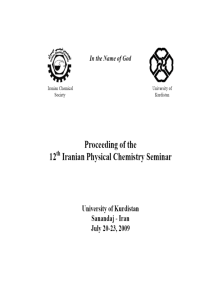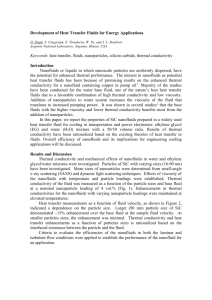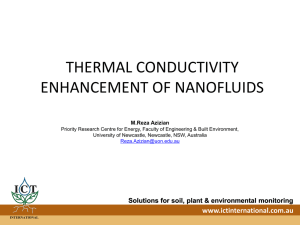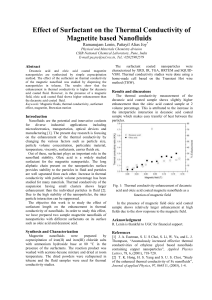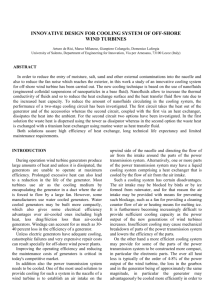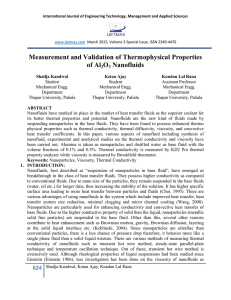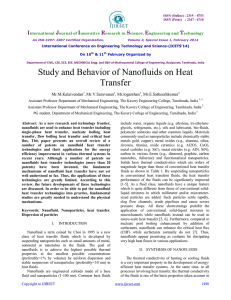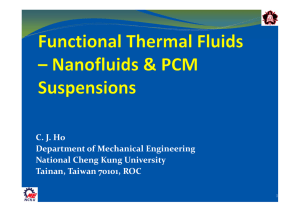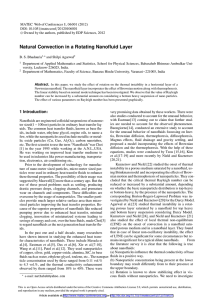150715191620SyschemE_2015_MeherWan
advertisement
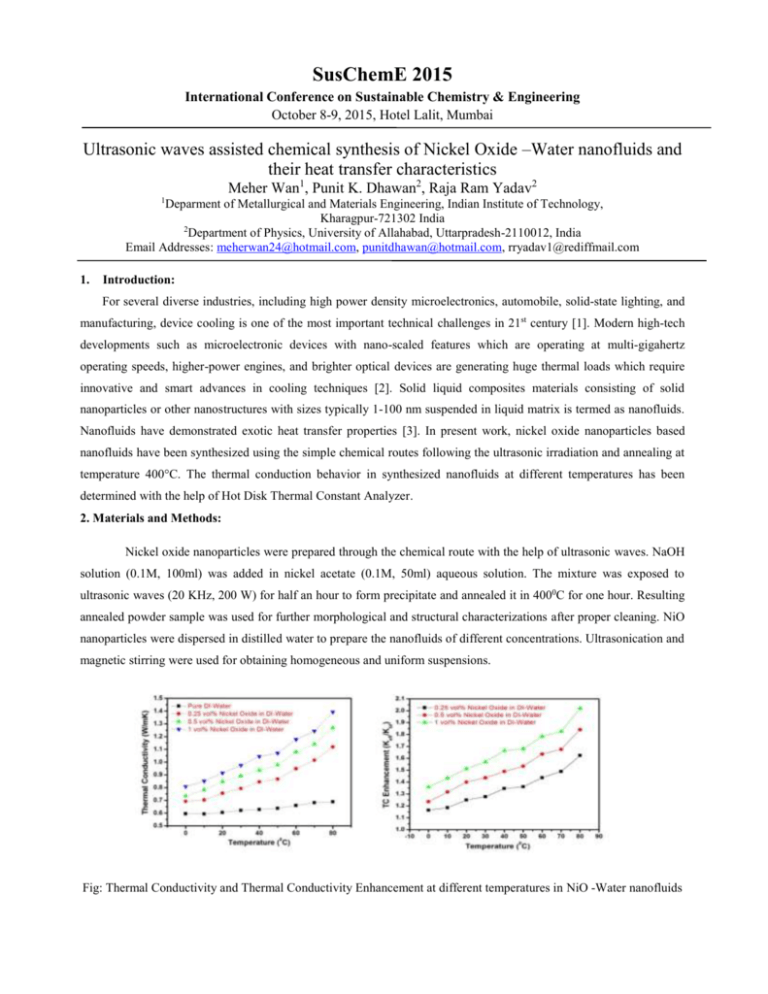
SusChemE 2015 International Conference on Sustainable Chemistry & Engineering October 8-9, 2015, Hotel Lalit, Mumbai Ultrasonic waves assisted chemical synthesis of Nickel Oxide –Water nanofluids and their heat transfer characteristics Meher Wan1, Punit K. Dhawan2, Raja Ram Yadav2 1 Deparment of Metallurgical and Materials Engineering, Indian Institute of Technology, Kharagpur-721302 India 2 Department of Physics, University of Allahabad, Uttarpradesh-2110012, India Email Addresses: meherwan24@hotmail.com, punitdhawan@hotmail.com, rryadav1@rediffmail.com 1. Introduction: For several diverse industries, including high power density microelectronics, automobile, solid-state lighting, and manufacturing, device cooling is one of the most important technical challenges in 21st century [1]. Modern high-tech developments such as microelectronic devices with nano-scaled features which are operating at multi-gigahertz operating speeds, higher-power engines, and brighter optical devices are generating huge thermal loads which require innovative and smart advances in cooling techniques [2]. Solid liquid composites materials consisting of solid nanoparticles or other nanostructures with sizes typically 1-100 nm suspended in liquid matrix is termed as nanofluids. Nanofluids have demonstrated exotic heat transfer properties [3]. In present work, nickel oxide nanoparticles based nanofluids have been synthesized using the simple chemical routes following the ultrasonic irradiation and annealing at temperature 400°C. The thermal conduction behavior in synthesized nanofluids at different temperatures has been determined with the help of Hot Disk Thermal Constant Analyzer. 2. Materials and Methods: Nickel oxide nanoparticles were prepared through the chemical route with the help of ultrasonic waves. NaOH solution (0.1M, 100ml) was added in nickel acetate (0.1M, 50ml) aqueous solution. The mixture was exposed to ultrasonic waves (20 KHz, 200 W) for half an hour to form precipitate and annealed it in 4000C for one hour. Resulting annealed powder sample was used for further morphological and structural characterizations after proper cleaning. NiO nanoparticles were dispersed in distilled water to prepare the nanofluids of different concentrations. Ultrasonication and magnetic stirring were used for obtaining homogeneous and uniform suspensions. Fig: Thermal Conductivity and Thermal Conductivity Enhancement at different temperatures in NiO -Water nanofluids SusChemE 2015 International Conference on Sustainable Chemistry & Engineering October 8-9, 2015, Hotel Lalit, Mumbai 3. Significant Results and Discussions: Due to the smaller particle size, stability of NiO-Water nanofluids is appreciably high and uniformity of mixture is maintained with very high efficiency with mild ultrasonic irradiation. This uniformity and better dispersion of nanoparticles results as the better heat conduction in nanofluids. This anomalous enhancement in thermal conductivity may be qualitatively justified with another model by Das et al. [4], which suggests the higher thermal conductivity enhancement for lower dimensional particles. According to this model, the thermal conductivity enhancement will be directly proportional to ratio of thermal conductivities and volume fraction of nanoparticles and liquid matrix and inversely proportional to particle radius. 4. Conclusions: The low dimensional NiO nps based nanofluids have much higher thermal conductivity and stability for heat transfer applications because of smaller dimension of nanoparticles as predicted by Das and co-workers. They are stable for months as the NiO nanoparticles have the low dimensions resulting better suspension and uniformity. References: [1] S. Anbumozhi Angayarkanni, John Philip, Appl. Phys. Lett. 101 (2012) 173113. [2] Junbo Wu, et al. Appl. Phys. Lett. 92 (2008) 263302. [3] J. H. Bang, K. S. Suslick, Advanced Materials 22 (2010) 1039–1059. [4] D. H. Kumar, Sarit K. Das, et al. Physical Review Letters 93:14 (2004) 144301-4
